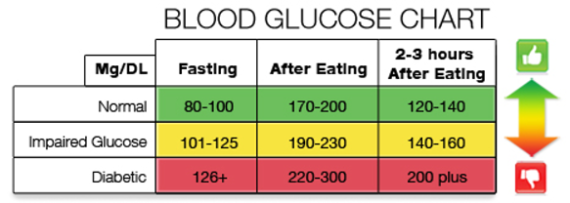 What is Blood Sugar?
What is Blood Sugar?Blood sugar level basically refers to the amount of glucose present in human blood. The human body regulates glucose as a part of the body’s metabolic homeostasis. It is stored in the liver cells and skeletal muscles.
Glucose acts as the primary source of energy in the human body and is essential for the normal functioning of tissues, particularly the tissues present in the brain.
Blood sugar levels that lie outside the normal range may be an indicator of a severe medical condition. A persistently high level is also known as hyperglycemia, while low levels are known as hypoglycemia.
Sugar levels that are higher than average is considered to be unhealthy. These high levels can inhibit the ability of the cells present in the pancreas to produce insulin. The organ then overcompensates, and insulin levels remain high, causing permanent damage to the pancreas. They can also cause changes that can harden blood vessels.
There are many reasons as to why one’s blood sugar level might increase. These include the following:
Diabetic patients often suffer from low blood sugar levels when their bodies don’t have the right amount of sugar needed. When the amount of sugar in the bloodstream drops and becomes less than four mm/L, the person’s blood sugar level decreases. There are many different symptoms of this condition, and include the following:
While there are different signs of high blood sugar levels, the following are some common early symptoms that make it easy to identify the condition. These include:
Symptoms of ongoing blood sugar levels include:
There are different early signs of low blood sugar levels. The following are some common early symptoms that make it easy to identify the condition. These include:
If you have diabetes and have noticed any of the above-mentioned early signs, then you must seek proper treatment immediately. To keep your levels regulated, the following treatment tips are recommended:
Diabetic patients who also have hypoglycemia must get their levels checked frequently.
People who experience a drop in their levels after having a meal filled with sugar must make dietary changes. Avoid eating sugary foods and instead eat small meals throughout the day.
In cases where low levels blood sugar levels are occurring on an empty stomach, eating a snack with protein and / or a complex carbohydrate will often solve the problem.
Too much insulin can also cause a drop-in sugar levels. In such instances, it may be required to lower your insulin dosage or make changes to the time when you take your last dose for the day. Do not change your dosage unless your doctor has given you approval to do so.
As part of these treatment, you must eat or drink at least 15 grams of a fast-acting carbohydrate such as:
After you’ve eaten any one of the foods mentioned above, wait for 15minutes before rechecking your blood sugar. If your level is still lower than 70mg/dL, then have another serving of the food or beverage chosen from the list above. Repeat the following steps until your sugar levels become normal.
In instances where a person faints due to low blood sugar levels, they should be given a glucagon injection. This is a medication that helps to raise sugar level in severe cases. However, do make sure that you know how to give the injection beforehand. Do not give any drink, food or insulin to an unconscious person, as they may choke. For more information visit here.
The amount of sugar (glucose) present in the body is measured in mg/dL. This amount of sugar present in the bloodstream changes throughout the day and night. So, your sugar level entirely depends on when you eat, what you eat and how much you eat, among other factors. The number of hours you’ve exercised that day matters as well.
So, what is a healthy blood sugar level? Well, if you have not eaten anything for at least 8 hours, then your sugar level should be less than 100mg/dL. And two hours after you have eaten, your sugar level should be less than 140 mg/dL.
For people without diabetes, sugar levels before any meal are usually around 70-80 mg/dL.
IMPORTANT NOTE: The above information is intended to increase awareness of health information and does not suggest treatment or diagnosis. This information is not a substitute for individual medical attention and should not be construed to indicate that use of the drug is safe, appropriate, or effective for you. See your health care professional for medical advice and treatment.

Canada Canadian Pharmacy dispenses all medications from licensed and regulated independent pharmacy partners internationally, including but not limited to Australia, Canada, New Zealand, India, Mauritius, Turkey, United States, Singapore and the United Kingdom. All Images on this site are registered trademarks of original manufacturers, international exporters, and property of their respective owners and are for reference only. Canada Pharmacy Online procures all products from licensed regulated international in order to provide you unbeatable lowest prices and prescription discounts for all your prescription medications, medications and Canadian Drugs at Canada Pharmacy Online.
2005-2023 Rxdrugscanada.com